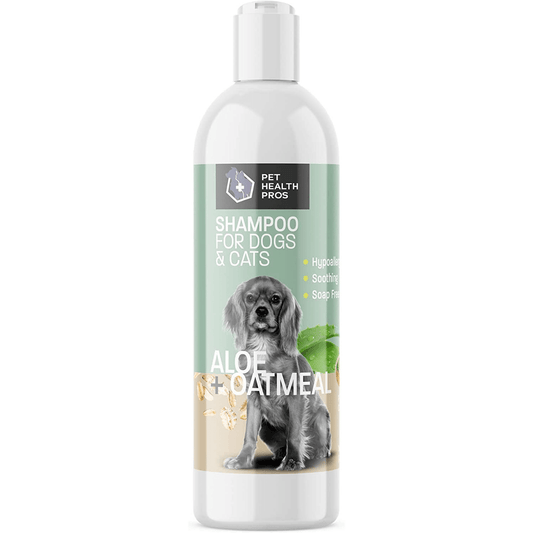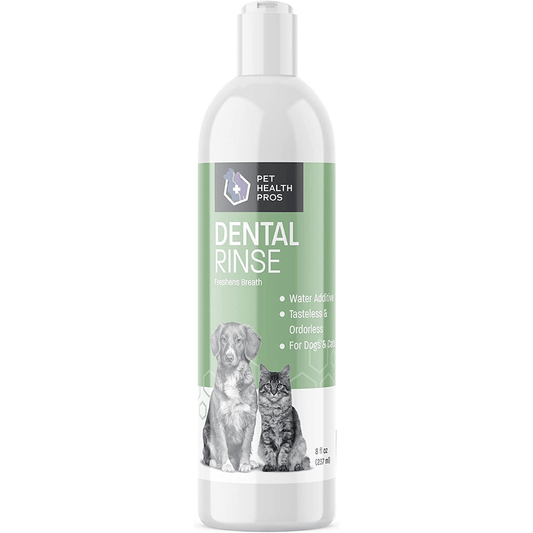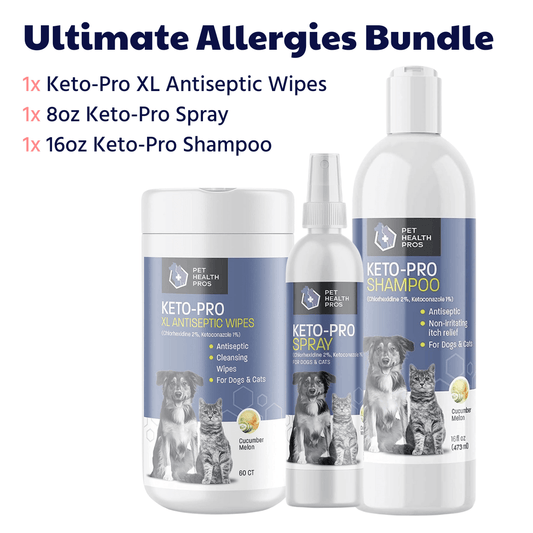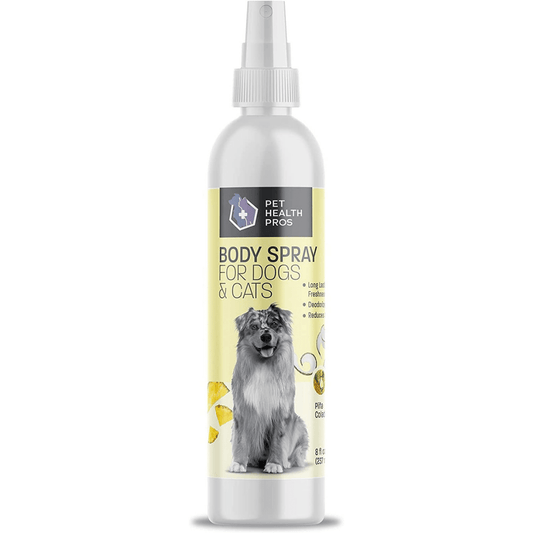Hot Spot Spray for Dogs: Soothing Your Pet's Skin Irritations
Hot spot spray for dogs is a popular solution for soothing skin irritations in pets. This article provides a comprehensive guide to understanding hot spot spray for dogs, choosing the right product, applying it safely, and monitoring and managing your dog's skin irritations.
Key Takeaways
- Hot spots in dogs are moist, red, and inflamed areas of the skin that can be very itchy and painful.
- Common causes of hot spots in dogs include allergies, insect bites, and poor grooming.
- Symptoms of hot spots in dogs may include constant licking, chewing, or scratching of a specific area, as well as hair loss and skin redness.
- When choosing a hot spot spray, look for natural ingredients like aloe vera, tea tree oil, and oatmeal that soothe and heal the skin.
- Avoid hot spot sprays that contain artificial fragrances, alcohol, and harsh chemicals, as these can further irritate the skin and cause discomfort.
Understanding Hot Spot Spray for Dogs
Causes of Hot Spots
Hot spots in dogs, also known as acute moist dermatitis, can be caused by a variety of factors. Excessive licking or chewing of the skin, often due to allergies or insect bites, can create a warm, moist environment that is conducive to bacterial growth. Poor grooming habits, such as leaving the coat wet after a bath, can also contribute to the development of hot spots. Additionally, skin irritations from matted hair or skin infections can lead to the formation of hot spots. It's important to address these underlying causes to effectively manage and prevent hot spots in dogs.
Symptoms of Hot Spots
Hot spots in dogs, also known as acute moist dermatitis, are painful, red, and inflamed areas of the skin. These hot spots are often caused by itching, scratching, or licking, leading to bacterial infection and skin irritation. The symptoms of hot spots in dogs include redness, swelling, and oozing of the affected area. Additionally, dogs may experience hair loss and exhibit signs of discomfort and irritation. It's important to recognize these symptoms early to provide prompt treatment and relief for your pet.
Choosing the Right Hot Spot Spray
Effectiveness and Safety
When considering the Effectiveness and Safety of hot spot sprays, it's crucial to prioritize your dog's care and well-being. Ensure that the product you choose is both effective in soothing skin irritations and safe for your pet. Look for natural ingredients such as aloe vera, tea tree oil, and oatmeal, which are known for their soothing and healing properties. Avoid products that contain harsh chemicals, artificial fragrances, or alcohol, as these can further irritate your dog's skin. Always conduct a patch test before full application to ensure your dog does not have an adverse reaction to the spray. Additionally, consider consulting with a veterinarian to determine the most suitable hot spot spray for your dog's specific needs.
Applying Hot Spot Spray to Your Dog
Preparing Your Dog for Application
Before applying Hot Spot Spray to your dog, it's important to prepare them for the application. This involves ensuring that the affected area is clean and free from debris. Gently pat the area dry with a clean cloth to remove any moisture. If the skin irritation is severe, consider trimming the fur around the affected area to allow for better exposure to the spray. Once the area is prepped, follow the proper application technique to ensure even coverage of the spray. Avoid spraying near the eyes or mouth to prevent any discomfort for your pet. After application, monitor your dog's behavior and the healing progress closely. If you notice any adverse reactions or lack of improvement, consult a veterinarian immediately.
Proper Application Technique
When applying hot spot spray to your dog, it's important to follow the proper technique for effective results. Start by gently cleaning the affected area with a mild antiseptic solution. Avoid using medicated products for dogs without consulting a veterinarian. Once the area is clean and dry, hold the spray bottle 6-8 inches away from the skin and apply a light mist, ensuring full coverage. Massage the spray into the skin for better absorption. Repeat this process 2-3 times a day for optimal healing. It's crucial to monitor your dog's reaction to the spray and observe any changes in the affected area. If there is no improvement or if the condition worsens, consult a veterinarian immediately. Remember, proper application technique is key to the effectiveness of the hot spot spray.
Frequency of Application
After understanding the frequency of application, it's important to consider the proper technique for applying hot spot spray to your dog's irritated skin. This process requires gentle and precise handling to ensure the best results. Avoid over-application as it may lead to skin irritation or discomfort for your pet. When applying the spray, be sure to cover the affected area thoroughly, using a back-and-forth motion to ensure even distribution. It's essential to follow the product's instructions regarding the amount of spray to use and the frequency of application. Here are some key points to keep in mind when applying hot spot spray:
- Use a gentle touch and avoid excessive pressure
- Ensure complete coverage of the affected area
- Follow the product instructions for application frequency
Remember: Consistency is key when applying hot spot spray. Regular and proper application will contribute to the healing process and provide relief for your pet's skin irritations.
Monitoring and Managing Your Dog's Skin Irritations
Observing Healing Progress
After applying the hot spot spray, it's important to observe the healing progress of your dog's skin irritations. Keep an eye out for any changes in the affected area, such as reduced redness and itching. Additionally, monitor the size of the hot spot to ensure that it's shrinking over time. If you notice any signs of infection or if the hot spot is not showing rapid relief, consult a veterinarian for further evaluation and treatment.
To track the healing progress effectively, consider creating a simple table to record the date, observations, and any changes in the hot spot. This will help you visualize the improvement and provide valuable information when discussing the situation with your veterinarian.
Remember to provide your dog with a comfortable and clean environment to aid in the healing process. Regularly wash your dog's bedding and keep the affected area clean and dry to prevent any further irritation.
Tip: If the hot spot is not showing rapid relief, it's important to seek professional guidance to address any underlying issues and ensure your dog's comfort and well-being.
Preventing Recurrence of Hot Spots
Preventing the recurrence of hot spots in dogs is crucial for maintaining your pet's skin health. After treating the initial irritation, it's important to take proactive measures to avoid future flare-ups. This involves observing your dog's behavior and environment to identify potential triggers. Additionally, maintaining a clean and hygienic living environment for your dog can significantly reduce the risk of hot spot recurrence. Regular grooming and inspection of your dog's skin can help detect early signs of irritation, allowing for prompt intervention. Furthermore, consulting a veterinarian for personalized advice on managing your dog's skin health is essential for long-term prevention of hot spots. Remember, a proactive approach is key to preventing your dog from experiencing discomfort and distress due to recurring hot spots.
Consulting a Veterinarian
After consulting a veterinarian, it's important to observe your dog's healing progress closely. Look for signs of improvement in the affected areas, such as reduced redness and itching. Keep a record of any changes you notice and discuss them with your veterinarian during follow-up visits. Additionally, take steps to prevent recurrence of hot spots by maintaining good grooming habits and addressing any underlying skin conditions. If your dog experiences persistent or severe skin irritations, seek professional advice from a veterinarian to ensure proper treatment and management.
If your dog is experiencing skin irritations, it's important to monitor and manage the condition to ensure your pet's health and comfort. At Pet Health Pros, we understand the significance of providing quality pet health supplies at affordable prices. Our products, made in the USA and backed by a 100% satisfaction guarantee, are designed to address skin irritations and promote overall well-being for your furry friend. Visit our website to explore our range of pet health supplies and shop with confidence.
Conclusion
In conclusion, hot spot spray for dogs is a valuable tool for soothing and treating your pet's skin irritations. By understanding the causes and symptoms of hot spots, choosing the right ingredients, and applying the spray with proper technique, you can effectively manage and monitor your dog's skin irritations. It is important to observe the healing progress, take steps to prevent the recurrence of hot spots, and seek professional advice by consulting a veterinarian when necessary. With the right knowledge and care, you can help your dog find relief from hot spots and maintain healthy skin.
Frequently Asked Questions
What are hot spots in dogs?
Hot spots in dogs, also known as acute moist dermatitis, are red, moist, and inflamed lesions that occur on a dog's skin. They are often itchy and can cause discomfort to the dog.
What causes hot spots in dogs?
Hot spots can be caused by various factors such as allergies, insect bites, poor grooming, and underlying skin conditions. Excessive licking, scratching, or moisture on the skin can also contribute to the development of hot spots.
What are the symptoms of hot spots in dogs?
The symptoms of hot spots in dogs include redness, inflammation, hair loss, itching, and oozing of pus or discharge. Dogs may also exhibit signs of discomfort, such as excessive licking or chewing at the affected area.
What ingredients should I look for in a hot spot spray?
When choosing a hot spot spray, look for ingredients such as aloe vera, tea tree oil, chamomile, and hydrocortisone. These ingredients have soothing and healing properties that can help alleviate skin irritations and promote healing.
How can I avoid harmful chemicals in hot spot sprays?
To avoid harmful chemicals in hot spot sprays, opt for products that are free from artificial fragrances, dyes, parabens, and alcohol. Natural and organic formulations are often safer for your dog's skin.
How often should I apply hot spot spray to my dog?
The frequency of applying hot spot spray to your dog depends on the severity of the hot spots and the product's instructions. In general, it is recommended to apply the spray 2-3 times a day or as directed by your veterinarian.









